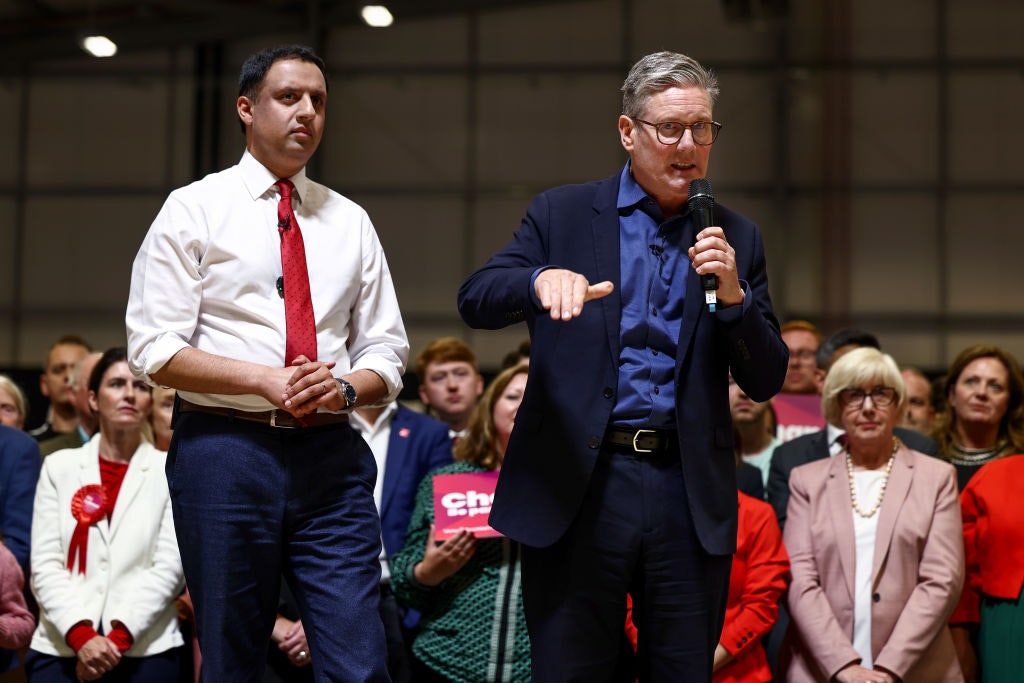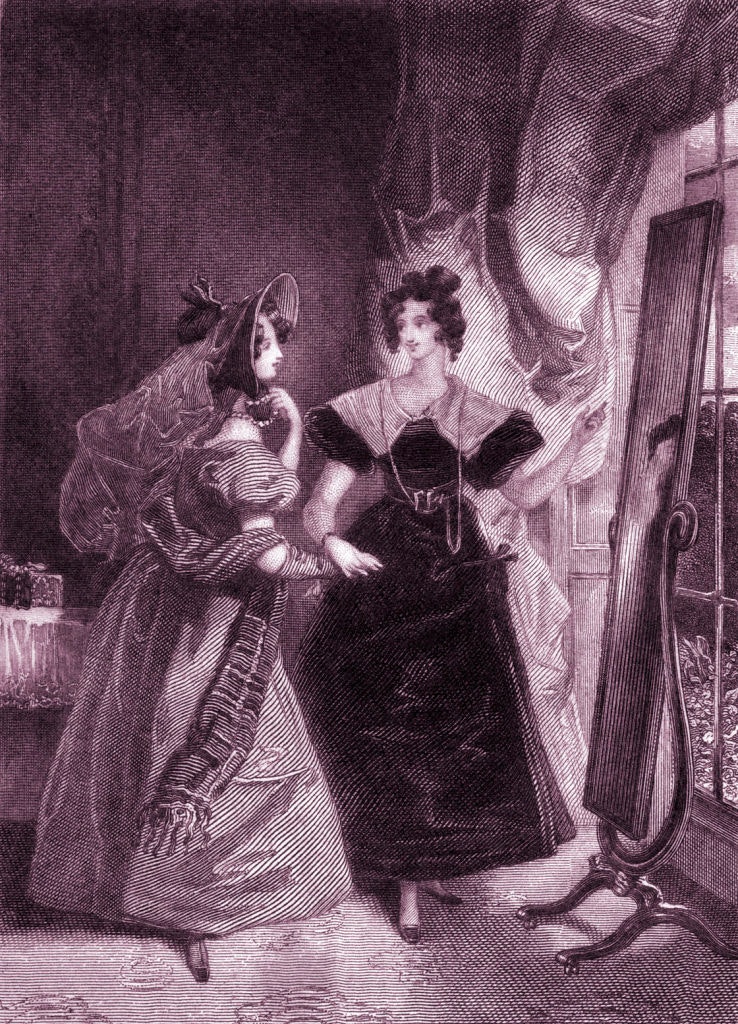Lessons of The Jetsons
The economic future foretold by the 1960s cartoon could hardly have been wider of the mark
This article is taken from the May 2023 issue of The Critic. To get the full magazine why not subscribe? Right now we’re offering five issues for just £10.
A few years back, the venture capitalist Peter Thiel famously complained: “We wanted flying cars, instead we got 140 characters.” With equal reason, those of us in the third decade of the twenty-first century might complain, “We were promised that the future would have one-earner families and more money for less work, instead we got two-earner families and stagnant wages.”
In 24 episodes that ran in 1962 and 1963 and then later in syndication, the cartoon series The Jetsons portrayed a family with a working husband and non-working wife (in 1960 only 38 per cent of American working-age women were in the paid workforce). As those of a certain age recall, George Jetson was the sole employee of a high-tech manufacturing company, Spacely Space Sprockets.
Jane, his wife, was a homemaker. Neither George nor Jane did much work, paid or unpaid. George worked an hour a day, two days a week. His work consisted of pushing a button and then relaxing. Jane was relieved from domestic drudgery by a robot maid. The couple had two children, a girl named Judy and a boy named Elroy, and Astro, a dog.
Flash forward to the twenty-first century. In 2012, the Obama re-election campaign released an ad entitled “The Life of Julia” which described how a woman from childhood to old age and her son Zachary would benefit from federal programs. In 2021, the Biden administration, to promote its proposed (and ultimately failed) “Build Back Better” plan, created a similar cartoon slideshow, this one starring Linda, a single mother and her son Leo. As conservative critics have pointed out, both Obama’s Julia and Biden’s Linda appear to be single mothers, either never-married or divorced. No husbands are mentioned in either case.
The Obama and Biden cartoons are aligned with the times. In 1960, births to unmarried American women were rare; today four out of ten American children are born to unwed mothers. Among black Americans, the illegitimacy rate has risen from around a quarter in 1960 to about 70 per cent today. A slight majority of Hispanics and roughly 40 per cent of non-Hispanic whites in the US are born outside of marriage today. Meanwhile, the percentage of Americans who are married has plummeted from 80 per cent in 1960 to 33.2 per cent in 2019.
Back in the 1960s, The Jetsons was wrong about the future of the family, as well as about flying cars. The future is here, and nearly half of Americans are born out of wedlock and raised by a single mother like the Democrats’ Julia and Linda.
What about the economy? Obama’s Julia is a “web designer,” a phrase which sounded vaguely futuristic in the Obama years, the way that “data processing entry technician” did in the 1970s when rows of mostly-female workers sat at desks punching holes in cards to be fed into the low-IQ computers of the day. Web design is a far less productive job than George Jetson’s task of pushing a button to make sprockets in an automated factory.
Unlike Julia, and like George Jetson, Biden’s Linda works in a factory. According to the Biden White House, “Linda is a working mother in Peoria, Illinois. She works at a local manufacturing facility as a production worker and earns $40,000 a year. She is pregnant with her son, Leo.” The cartoon shows Linda dressed in a hard hat, a work shirt, a utility belt, jeans, and work boots and holding a clipboard. Not even the pretence of futuristic imagery. The White House publication came out in 2021, but the picture could just as well represent Rosie the Riveter during the Second World War.
What about the future of work, as seen by the Biden administration in 2021? “Thanks to his community college training, Leo lands a good-paying, union job as a wind-turbine technician” (to judge from Leo’s appearance as a young adult conversing with another worker, a woman wearing a hard hat like Leo’s mom Linda, nothing symbolises the emancipation of women better than female construction workers in hard hats.)
Wouldn’t there be repair robots by then?
If you had told me, as a child in the 1960s, that blue-collar workers would be needed in the 2040s to repair windmills, I would have been puzzled. Wouldn’t there be repair robots by then? And why would electricity come from old-timey windmills, instead of nuclear power plants?
Between the 1960s and the 2020s, then, the American vision of the future has gone from one in which technology-enabled productivity growth allows a single breadwinner to support an entire family with minimum work, to a vision in which the workforce is full of single mothers engaged in activities like web design or wind turbine maintenance which, by convention, we pretend are “high tech” but really are not, compared, say, to flying cars or robot sprocket factories.
Enter Donald J. Trump. As part of his campaign to win the Republican nomination in 2024, Trump announced in March that if elected he would push through a crash federal program to develop flying cars. As CNN observed, “Commuters, meanwhile, could get around in flying cars, Trump said — an echo of The Jetsons, the classic cartoon about a family in a high-tech future society.”
Trump also proposed building up to ten new “freedom cities” on empty federal land. Whether the new freedom cities will have apartment buildings atop stilts high in the atmosphere where flying cars can land, like the Orbit City apartment complex of the Jetsons, Trump did not say.
Trump is a shrewd salesman
Trump is a shrewd salesman, and he understands that there is an unmet market demand for a vision of the future in which the innovative technology is more impressive than web design graphics and windmills. Others on the American right are responding to another market demand, the demand for alternatives to the two-earner family ideal — or, in the case of the Obama and Biden administrations, the one-earner single-parent ideal. In his recent campaign for a US Senate seat in Arizona, Blake Masters, a venture capitalist and protégé of Peter Thiel, declared that a single income should be enough to support a family. His loss in the election can be attributed to his comments that social security needs to be cut, not to the vision of the one-earner, two-parent family.
That vision of the ideal family has never ceased to be popular in both America and Europe, even though it is dismissed by neoliberal elites. The movement of women into the workforce is greatly exaggerated. It has risen only from a little under 40 per cent in 1960 to 56.8 per cent in 2022: a significant increase, but hardly a revolutionary change.
Among US adults in 2019, according to Pew Research Centre, only 33 per cent say that working full time is best for mothers with young children, compared to 21 per cent who thought not working for pay at all was best, and 42 per cent who favoured part-time work.
Could the slowdown in productivity growth in the US, the breakdown of the nuclear family and the rise of illegitimacy and single parenthood be related? One possible explanation for both is the reliance of the US, UK, and other Western countries on growth derived from workforce growth, made possible by adding warm bodies to the paid workforce, rather than technological innovation that allows the same or fewer workers to produce more output with less labour like George Jetson. Mass immigration expands the workforce. So does cutting old-age entitlements, forcing people to stay in the workforce longer. And so does encouraging women, including mothers of young children, to switch from unpaid labour in the family economy to paid labour in the marketplace.
It is no coincidence that the US Chamber of Commerce and other business lobbies tend to favour all three ways to expand output by expanding the workforce instead of increasing productivity: ever-rising immigration, “entitlement reform” (cuts), and more day-care so that more mothers can join the workforce. And most governments in the West favour workforce- and population-driven growth over productivity growth, as well.
Increasing GDP by inventing flying cars is hard. But because unpaid domestic labour is not counted as part of GDP. GDP goes up when the mother of a one-year-old goes to work as a website designer like Julia or as hard-hat in a factory like Linda. And GDP goes up even further when a stranger is paid wages to babysit Julia’s son Zachary and Linda’s son Leo.
Population-driven growth, enabled by replacing one-earner families with two-earner or single-earner families, as well as mass immigration, may not only substitute for technological innovation; it may actually reduce technological progress, if it is cheaper for employers to add workers than to invest in labour-saving machines.
As Paul Mason has pointed out, in the UK the car-wash industry has regressed technologically, thanks to surplus low-wage labour: “A car wash used to mean a machine. Now it means five guys with rags.” Hand car washes by low-wage workers are springing up in the U.S., which is also seeing the renaissance of “squeegee guys” — mostly young men, often immigrants — who dash into traffic to wipe your windshield for a pittance, a reliable indicator of Third Worldisation.
If the Jetsons were remade today, perhaps Mr Spacely, the owner of Spacely Space Sprockets, would decide to cut costs by firing the overpaid, underworked George Jetson and replacing an automated factory with a manual sweatshop staffed by an army of low-wage workers, dramatising technological regression from The Jetsons to The Flintstones.
The progressive utopia in which single mothers drop off their young children at daycare on their way to hard-hat jobs in stagnant-tech industries (wind farms) or pseudo-tech industries (website design) seems like a dystopia to many people. This was not what the twenty-first century was supposed to be like. It will not be surprising if more and more voters start to ask: Where is my flying car — and where is my one-earner, two-parent family?
Enjoying The Critic online? It's even better in print
Try five issues of Britain’s newest magazine for £10
Subscribe














